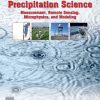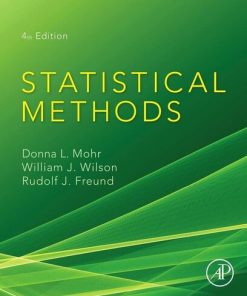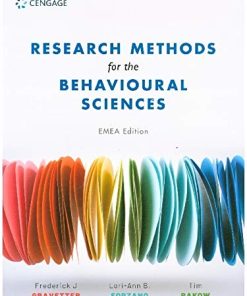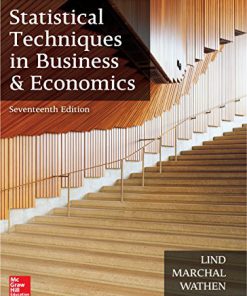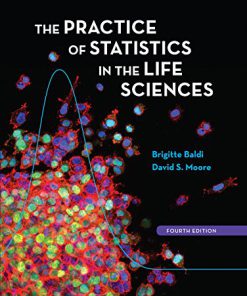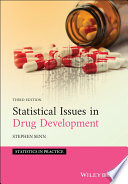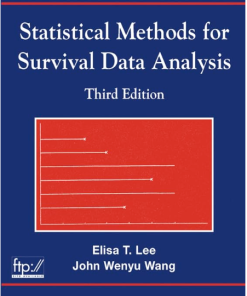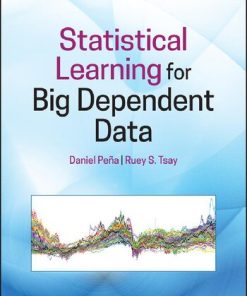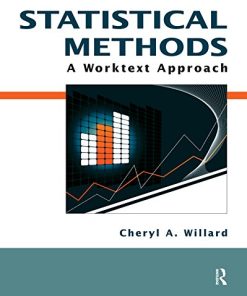(Ebook PDF) Statistical Methods in the Atmospheric Sciences 4th Edition by Daniel Wilks 0128165278 9780128165270 full chapters
$50.00 Original price was: $50.00.$25.00Current price is: $25.00.
Statistical Methods in the Atmospheric Sciences 4th Edition by Daniel S. Wilks – Ebook PDF Instant Download/DeliveryISBN: 0128165278, 9780128165270
Full download Statistical Methods in the Atmospheric Sciences 4th Edition after payment.

Product details:
ISBN-10 : 0128165278
ISBN-13 : 9780128165270
Author : Daniel S. Wilks
Statistical Methods in the Atmospheric Sciences, Fourth Edition, continues the tradition of trying to meet the needs of students, researchers and operational practitioners. This updated edition not only includes expanded sections built upon the strengths of the prior edition, but also provides new content where there have been advances in the field, including Bayesian analysis, forecast verification and a new chapter dedicated to ensemble forecasting.
Statistical Methods in the Atmospheric Sciences 4th Table of contents:
Part I: Preliminaries
Chapter 1: Introduction
1.1 What is Statistics?
1.2 Descriptive and Inferential Statistics
1.3 Uncertainty About the Atmosphere
Chapter 2: Review of Probability
2.1 Background
2.2 The Elements of Probability
2.3 The Meaning of Probability
2.4 Some Properties of Probability
2.5 Exercises
Part II: Univariate Statistics
Chapter 3: Empirical Distributions and Exploratory Data Analysis
3.1 Background
3.2 Numerical Summary Measures
3.3 Graphical Summary Devices
3.4 Reexpression
3.5 Exploratory Techniques for Paired Data
3.6 Visualization for Higher-Dimensional Data
3.7 Exercises
Chapter 4: Parametric Probability Distributions
4.1 Background
4.2 Discrete Distributions
4.3 Statistical Expectations
4.4 Continuous Distributions
4.5 Qualitative Assessments of the Goodness of Fit
4.6 Parameter Fitting Using Maximum Likelihood
4.7 Statistical Simulation
4.8 Exercises
Chapter 5: Frequentist Statistical Inference
5.1 Background
5.2 Some Commonly Encountered Parametric Tests
5.3 Nonparametric Tests
5.4 Multiplicity and “Field Significance”
5.5 Analysis of Variance and Comparisons Among Multiple Means
5.6 Exercises
Chapter 6: Bayesian Inference
6.1 Background
6.2 The Structure of Bayesian Inference
6.3 Conjugate Distributions
6.4 Dealing With Difficult Integrals
6.5 Exercises
Chapter 7: Statistical Forecasting
7.1 Background
7.2 Linear Regression
7.3 Multiple Linear Regression
7.4 Predictor Selection in Multiple Regression
7.5 Regularization/Shrinkage Methods for Multiple Regression
7.6 Nonlinear Regression
7.7 Nonparametric Regression
7.8 “Machine-Learning” Methods
7.9 Objective Forecasts Using Traditional Statistical Methods
7.10 Subjective Probability Forecasts
7.11 Exercises
Chapter 8: Ensemble Forecasting
8.1 Background
8.2 Ensemble Forecasts
8.3 Univariate Ensemble Postprocessing
8.4 Multivariate Ensemble Postprocessing
8.5 Graphical Display of Ensemble Forecast Information
8.6 Exercises
Chapter 9: Forecast Verification
9.1 Background
9.2 Nonprobabilistic Forecasts for Discrete Predictands
9.3 Nonprobabilistic Forecasts for Continuous Predictands
9.4 Probability Forecasts for Discrete Predictands
9.5 Probability Distribution Forecasts for Continuous Predictands
9.6 Quantile Forecasts
9.7 Verification of Ensemble Forecasts
9.8 Nonprobabilistic Forecasts for Fields
9.9 Verification Based on Economic Value
9.10 Verification When the Observation is Uncertain
9.11 Sampling and Inference for Verification Statistics
9.12 Exercises
Chapter 10: Time Series
10.1 Background
10.2 Time Domain—I. Discrete Data
10.3 Time Domain—II. Continuous Data
10.4 Frequency Domain—I. Harmonic Analysis
10.5 Frequency Domain—II. Spectral Analysis
10.6 Time-Frequency Analyses
10.7 Exercises
Part III: Multivariate Statistics
Chapter 11: Matrix Algebra and Random Matrices
11.1 Background to Multivariate Statistics
11.2 Multivariate Distance
11.3 Matrix Algebra Review
11.4 Random Vectors and Matrices
11.5 Exercises
Chapter 12: The Multivariate Normal Distribution
12.1 Definition of the MVN
12.2 Four Handy Properties of the MVN
12.3 Transforming to, and Assessing Multinormality
12.4 Simulation From the Multivariate Normal Distribution
12.5 Inferences About a Multinormal Mean Vector
12.6 Exercises
Chapter 13: Principal Component (EOF) Analysis
13.1 Basics of Principal Component Analysis
13.2 Application of PCA to Geophysical Fields
13.3 Truncation of the Principal Components
13.4 Sampling Properties of the Eigenvalues and Eigenvectors
13.5 Rotation of the Eigenvectors
13.6 Computational Considerations
13.7 Some Additional Uses of PCA
13.8 Exercises
Chapter 14: Multivariate Analysis of Vector Pairs
14.1 Finding Coupled Patterns: CCA, MCA, and RA
14.2 Canonical Correlation Analysis (CCA)
14.3 Maximum Covariance Analysis (MCA)
14.4 Redundancy Analysis (RA)
14.5 Unification and Generalization of CCA, MCA, and RA
14.6 Exercises
Chapter 15: Discrimination and Classification
15.1 Discrimination vs. Classification
15.2 Separating Two Populations
15.3 Multiple Discriminant Analysis (MDA)
15.4 Forecasting with Discriminant Analysis
15.5 Conventional Alternatives to Classical Discriminant Analysis
15.6 “Machine Learning” Alternatives to Conventional Discriminant Analysis
15.7 Exercises
Chapter 16: Cluster Analysis
16.1 Background
16.2 Hierarchical Clustering
16.3 Nonhierarchical Clustering
16.4 Self-Organizing Maps (SOM)
16.5 Exercises
People also search for Statistical Methods in the Atmospheric Sciences 4th:
wilks ds 2011 statistical methods in the atmospheric sciences
wilks ds statistical methods in the atmospheric sciences
wilks ds 2006 statistical methods in the atmospheric sciences
statistical methods in the atmospheric sciences 4th edition pdf
statistical methods in the atmospheric sciences 4th edition
Tags:
Statistical Methods,the Atmospheric Sciences,Daniel Wilks
You may also like…
Science (General)
Science (General) - Science of Science
Biology and other natural sciences - Biostatistics
Statistical Issues in Drug Development 3rd Edition Stephen S. Senn


